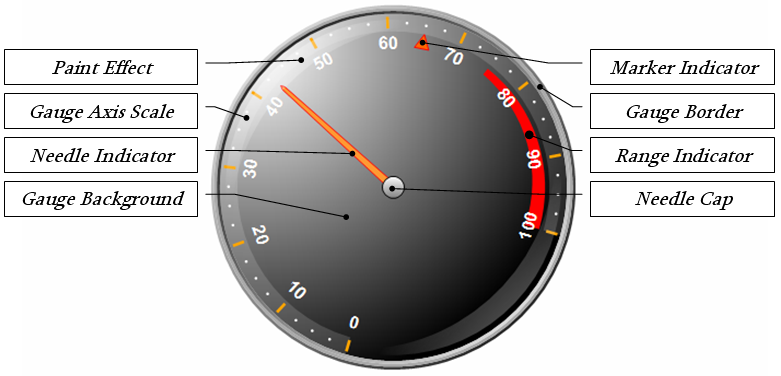Nevron Chart has extensive support for radial (circular) and linear gauges that both share a common programming model. The core concept of gauges is that each gauge consists of two groups of objects – axes and indicators.
The gauge axis is an object that shows a scale and can be positioned in the gauge model space. Gauge axis scales follow the same concept as chart scales and are fully configurable and customizable.
The gauge indicator is an object that pinpoints a certain value or range of values on a specified gauge axis.
The core functionality of a gauge is exposed from the NGaugePanel abstract class, which serves as a base for the NLinearGaugePanel and NRadialGaugePanel classes (describing a linear gauge and radial gauge respectively). The following picture visually illustrates the different elements of a gauge:

The NGaugePanel exposes two collections – Axes and Indicators that allow you to modify the number of gauge axes and indicators displayed by the gauge. By default each gauge will have one axis and no indicators.

